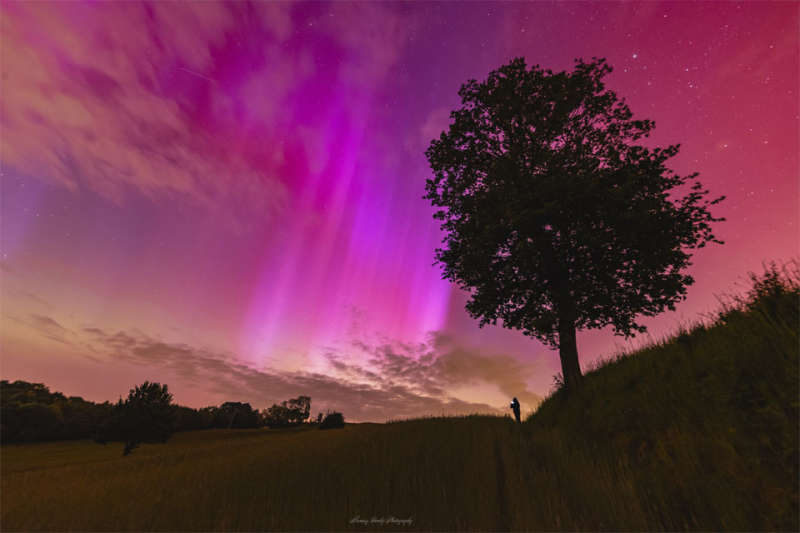Credit & Copyright: Mariusz Durlej
Explanation:
Northern lights don't usually reach this far south.
Magnetic chaos in the Sun's
huge Active Region 3664, however, produced a surface
explosion that sent a
burst of
electrons, protons, and more massive, charged nuclei into the
Solar System.
A few days later, that
coronal mass ejection (CME) impacted the Earth and
triggered auroras that are being reported
unusually far from our planet's
north and south poles.
The free sky show
might
not be over --
the sunspot rich AR3664 has ejected even more
CMEs that might also impact the
Earth
tonight or tomorrow.
That active region is now
near the Sun's edge, though,
and will soon be rotating away from the
Earth.
Pictured, a
red and
rayed aurora
was captured in a single 6-second exposure from
RacibцЁrz,
Poland
early last night.
The photographer's friend, seeing an aurora for the first time, is visible in the
distance also taking images of the
beautifully colorful
nighttime sky.
Gallery:
Global Aurora from Solar Active Region 3664
1999 2000 2001 2002 2003 2004 2005 2006 2007 2008 2009 2010 2011 2012 2013 2014 2015 2016 2017 2018 2019 2020 2021 2022 2023 2024 2025 |
Январь Февраль Март Апрель Май Июнь Июль Август Сентябрь Октябрь Ноябрь Декабрь |
NASA Web Site Statements, Warnings, and Disclaimers
NASA Official: Jay Norris. Specific rights apply.
A service of: LHEA at NASA / GSFC
& Michigan Tech. U.
|
Публикации с ключевыми словами:
aurora borealis - северное сияние
Публикации со словами: aurora borealis - северное сияние | |
См. также:
Все публикации на ту же тему >> | |
